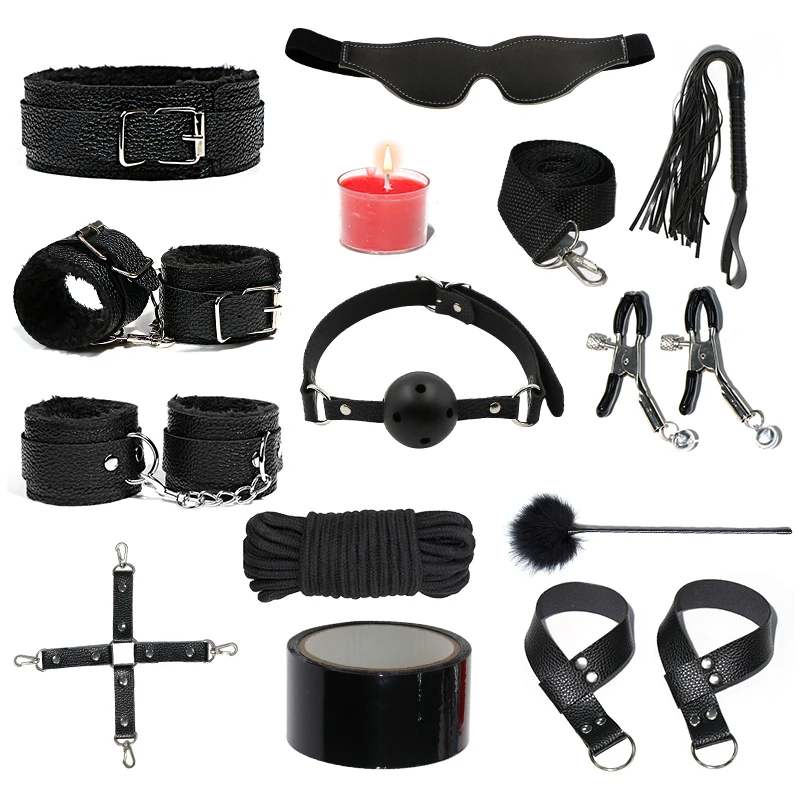Understanding the Basics of BDSM
BDSM, an acronym for Bondage, Discipline, Dominance, Submission, Sadism, and Masochism, is a variety of often erotic practices or role-playing involving power exchange, pain, and restraints. So, what is BDSM? At its core, BDSM is about consensual power exchange and exploring the sensual mix of pleasure and pain. This exploration welcomes all individuals, regardless of gender or sexual preference, who are open to different forms of intimacy and trust.
BDSM Practices and Terminology
Many are curious about BDSM meaning and the different facets that encompass it. Bondage and discipline (BD) involve physical restraints like ropes or mental restrictions through rules. Dominance and submission (DS) focus on power dynamics, where one person holds authority while the other relinquishes control. Sadism and masochism (SM) refer to the enjoyment of inflicting (sadism) or receiving (masochism) pain.
BDSM practices can range from light bondage, spanking, and role play to more intense sessions like sensory deprivation and complex fantasies. BDSM terminology is vast, and understanding terms is vital for effective communication. Terms such as ‘safe word,’ ‘scene,’ and ‘aftercare’ are particularly important for ensuring a responsible and enjoyable experience.
BDSM Safety and Consent
Safety cannot be overstressed in BDSM. BDSM safety guidelines dictate that all activities must be consensual, negotiated ahead of time, and involve clear limits and safe words. ‘Safe, Sane, and Consensual’ (SSC) and ‘Risk-Aware Consensual Kink’ (RACK) are two frameworks that participants can use to ensure that activities are safe and consensual.
Consent is fundamental in BDSM. Those involved must communicate openly and honestly about their boundaries, fantasies, and limits. Using a safe word—a pre-agreed upon word that signals the need to stop or ease activity—safeguards all participants. Additionally, aftercare, or taking care of each other post-scene, is essential as it aids emotional and physical recovery, reinforcing security and trust.
Exploring Kink and Fetish
Kink and fetish are integral to the BDSM lifestyle. A kink is any unconventional sexual practice, while a fetish is a sexual fixation on a specific object or act necessary for arousal. Disparities in people’s kinks and fetishes are what make BDSM so diverse and customizable. From leather and latex to role-playing scenarios, these interests shape individual and mutual experiences.
Many BDSM practitioners engage in BDSM education to explore their kink and expand their knowledge responsibly. BDSM workshops often offer opportunities to learn new techniques, discuss community norms, and meet like-minded individuals. These educational endeavors enhance BDSM practices and underscore the importance of continual learning.
BDSM Gear and Toys
BDSM gear and toys are as diverse as the people who cherish the BDSM lifestyle. From bondage gear like cuffs, collars, ropes, and harnesses to toys designed to stimulate and heighten sensory experiences, there’s something for every preference and level of experience. BDSM gear not only facilitates activities but also often embodies personal identity expressions, such as dom/sub dynamics and gender roles.
Companies like Snailcup, based in Ningbo, China, play a vital role in the adult industry by providing high-quality BDSM toys and tools. Snailcup’s extensive catalog features a range of products, including dildos, vibrators, and male masturbators—all designed with safety in mind. Moreover, customization services offered by distributors like Snailcup ensure that every enthusiast can enjoy products tailored to their specific desires and needs.
The Role of BDSM in Relationships
BDSM can profoundly impact relationships, offering partners new dimensions to explore mutual fantasies and personal limits. BDSM and relationships can thrive when grounded in trust, respect, and open communication. It enables partners to break conventional norms and embark on deeply personal sexual journeys.
The diversity in role play, including gender roles, also allows couples to experiment with dynamics they may not experience in their daily lives. Flourishing in a BDSM context requires recurrent dialogue, consent checks, and a willingness to adapt to what each partner finds enjoyable and fulfilling. It is through such understanding and alignment that many couples find BDSM becomes not just a practice, but a lifestyle.
Conclusion
The question of ‘what is BDSM?’ opens the door to a world rich with possibilities and individual expression. Whether a novice or seasoned practitioner, the path through BDSM basics to comprehensive education and practice is paved with opportunities for growth and transformation. Snailcup’s commitment to providing quality BDSM gear to a global audience underscores the importance of accessibility and choice in a field characterized by its variety and personalization.
Informed and educated BDSM practices foster safety, mutual respect, and greater self-understanding—pillars vital to any successful exploration into this intricate and rewarding lifestyle.








